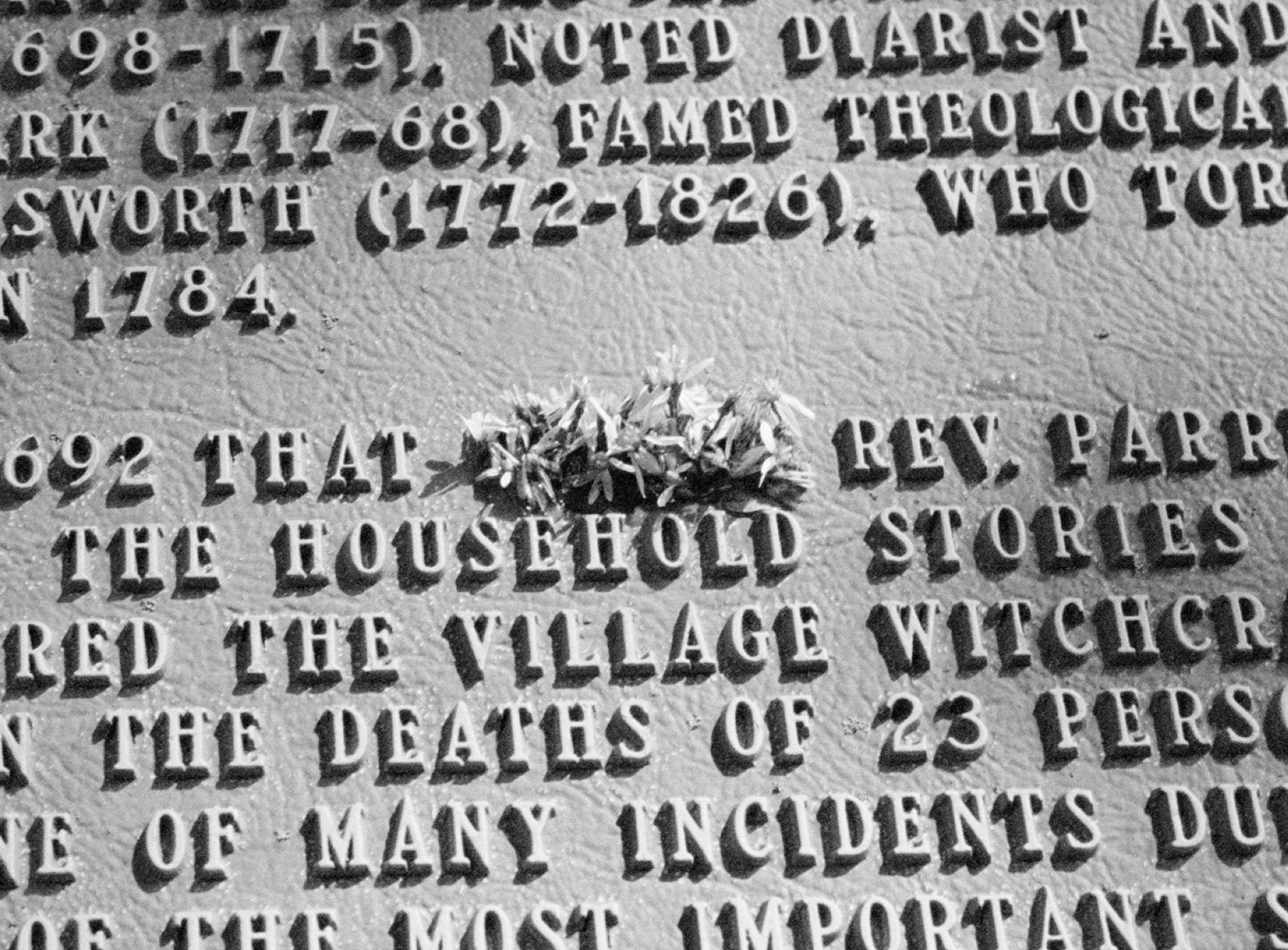An ongoing intervention installation at the Salem Village Parsonage historical site. Here plants obscure the words Tituba and slave as well as a possessive apostrophe after the name Parris. The omissions enable an alternative story in which the Reverend Parris himself is to blame.
Clover and purple aster found growing wild at the site, edible glue.
Massachusetts, October 2022

